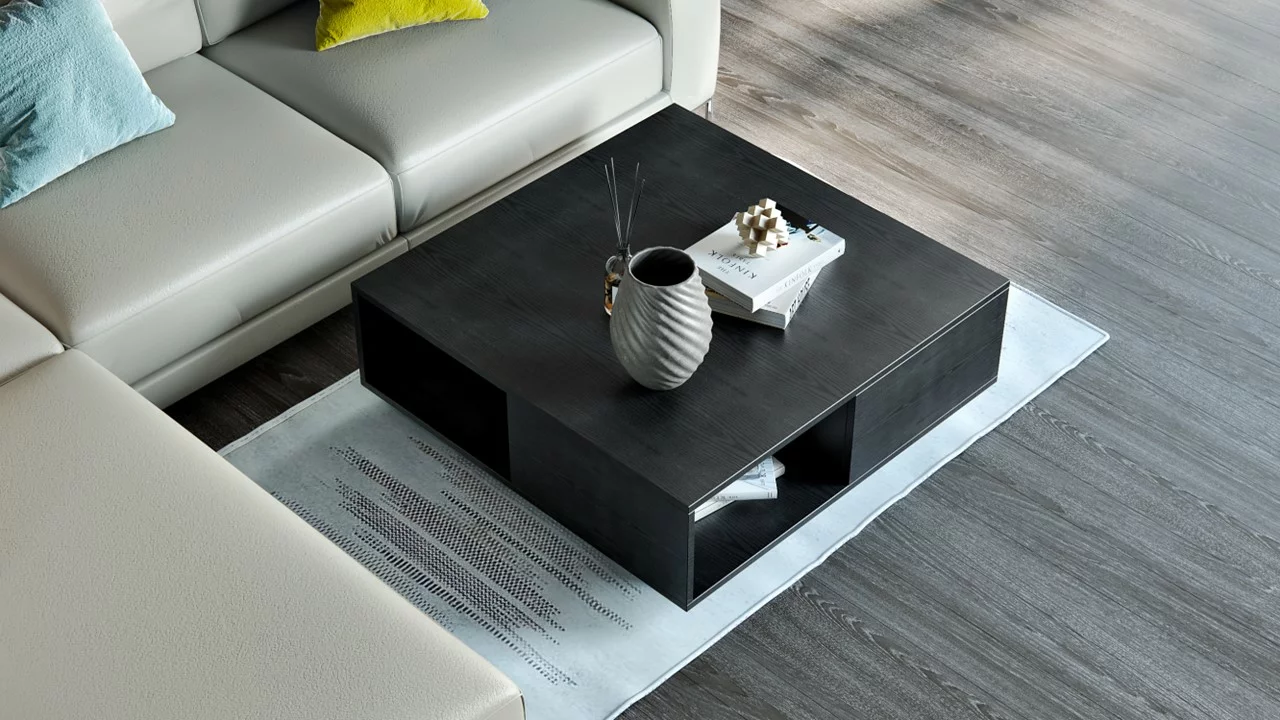
Every dreamy living room has one thing in common—a coffee table that effortlessly ties the room together. It’s the unsung hero of home decor that says, “This is where life happens.” But when it’s time to choose your own, you suddenly face a wave of options. Shape, size, material, and style. Who knew a piece of furniture could come with so many decisions? If you’ve ever felt lost in the quest for the perfect coffee table, caught between “this one’s too big” and “that one’s too modern”, you’re not alone. This blog is here to cut through the confusion and guide you to choose that one table that feels less like a piece of furniture and more like a piece of home.
Step 1: Measure Your Space
Begin by considering the size of your room and the proportion of surrounding furniture, especially your sofa, to determine the ideal table dimensions. The coffee table should be about two-thirds the length of your sofa and either level with or up to 2 inches lower than the sofa’s seats for ease of use and aesthetic balance. Width and depth are also crucial, with a recommended 12-18 inches of space between the table and your seating to facilitate comfortable movement. Maintaining at least 30 inches of walkway space around the table also helps avoid a cramped environment.
Step 2: Pick the Right Shape
- Rectangular: Their elongated shape offers ample surface area for practical use and decorative displays, making them a popular choice for small and large living spaces. Additionally, rectangular tables facilitate easy conversation and interaction among guests, complementing traditional seating arrangements where sofas and chairs face each other.
- Round: The absence of sharp corners makes them ideal for households with young children or pets, minimising the risk of injury. Moreover, their shape promotes efficient use of space, fitting snugly into smaller living areas or tight spots. Round tables also encourage a more intimate gathering, allowing for equal visibility and access for everyone seated around them.
- Square: They offer a generous surface area in a compact design, facilitating social interaction and convenience. Square tables can anchor a room by providing a focal point. When placed in the centre, they make everything within reach for seated guests, enhancing the room’s functionality and aesthetic appeal.
- Oval: Their smooth edges contribute to a safe environment, like round tables, while their elongated shape provides a rectangular table’s functionality and surface area. Oval tables are particularly effective in narrower rooms or spaces where movement around the table is frequent.
Step 3: Choose the Material
- Wood: It brings warmth and natural beauty to any space, complementing classic and contemporary interiors. Wooden coffee tables are durable and can last decades if properly cared for. They’re ideal for a cosy, rustic, or Scandinavian-inspired look and come in various finishes from light pine to dark walnut.
- Metal: They are highly durable and can handle heavy use, making them suitable for households with pets or children. Metal tables often feature minimalist designs and can be combined with other materials like glass or wood for a chic, mixed-material look. They’re perfect for adding a sleek, modern touch to your space.
- Glass: Glass coffee tables are known for making a space feel more open and less cluttered, thanks to their transparent surfaces. Glass tables are easy to clean and maintain. However, they do show fingerprints and smudges more readily than other materials. They’re best suited for adult-only spaces or where the risk of breakage is minimal.
- Stone (Marble, Granite, and Others): Stone coffee tables, particularly those made from marble or granite, add a touch of luxury and sophistication to any living area. Each piece is unique, with natural patterns and colours that can serve as a room’s focal point. Stone is very durable and resistant to heat, but it can be porous and may require sealing to prevent stains.
- Upholstered: Coffee tables offer a soft, plush look and can double as extra seating or a comfortable footrest. They often come in fabric or leather, adding texture and depth to your living space. Upholstered tables can also include storage options, making them a practical choice for hiding away blankets, books, or games. They require more maintenance, especially if the fabric is light-coloured or delicate.
Step 4: Style and Functionality
Style Variations
- Modern: Modern coffee tables often feature clean lines, geometric shapes, and a minimalist approach, using materials like metal, glass, and polished wood. They fit seamlessly into contemporary living spaces, emphasising functionality and simplicity.
- Industrial: Characterised by using raw materials such as metal, wood, and leather, industrial coffee tables often incorporate a rugged, aged appearance. They add character and a strong, sturdy presence to a room, ideal for loft-style and modern rustic interiors.
- Mid-Century Modern: This style combines function and form with sleek lines, organic shapes, and traditional and non-traditional materials. Mid-century modern coffee tables often use wood and feature tapered legs, contributing to a timeless, retro aesthetic.
- Rustic: Rustic coffee tables, using natural, distressed wood and sometimes metal accents, bring warmth and charm to spaces. They embody a cosy, lived-in feel, perfect for creating a relaxing and inviting atmosphere.
- Traditional: Featuring ornate designs, rich wood finishes, and detailed craftsmanship, traditional coffee tables evoke a sense of elegance and timelessness. They often have rounded edges and decorative legs, fitting in classic and sophisticated decors.
Functional Features
- Storage: Many coffee tables offer built-in storage options like drawers, shelves, or compartments. This feature is invaluable for keeping living spaces tidy by organising magazines, remotes, and other items.
- Lift Tops: Lift-top coffee tables feature a hinged surface that can be raised to provide a higher, stable platform. This functionality is perfect for those who work from their sofa or enjoy meals in their living room, adding versatility and convenience.
- Nesting Tables: Nesting coffee tables consist of multiple tables of varying sizes that can fit together. They are ideal for small spaces, offering the flexibility to expand the surface area and conserve space when not in use.
- Ottoman Coffee Tables: Combining the comfort of an ottoman with the utility of a coffee table, these pieces often feature soft, upholstered tops and may include storage inside. They’re great for a casual, comfortable feel and can double as extra seating.
- Wheels/Casters: Some coffee tables come with wheels or casters, making them easy to move. This feature is handy in multifunctional spaces or when the table needs to be moved frequently for cleaning or rearranging.
And there you have it—the end of our coffee table saga. Who knew that a piece of furniture could inspire such an adventure? From the practicalities of size and shape to the aesthetics of material and style, finding the perfect coffee table is a journey. But it’s more than just a hunt for a place to set your coffee; it’s about discovering that missing piece that turns a house into a home.







